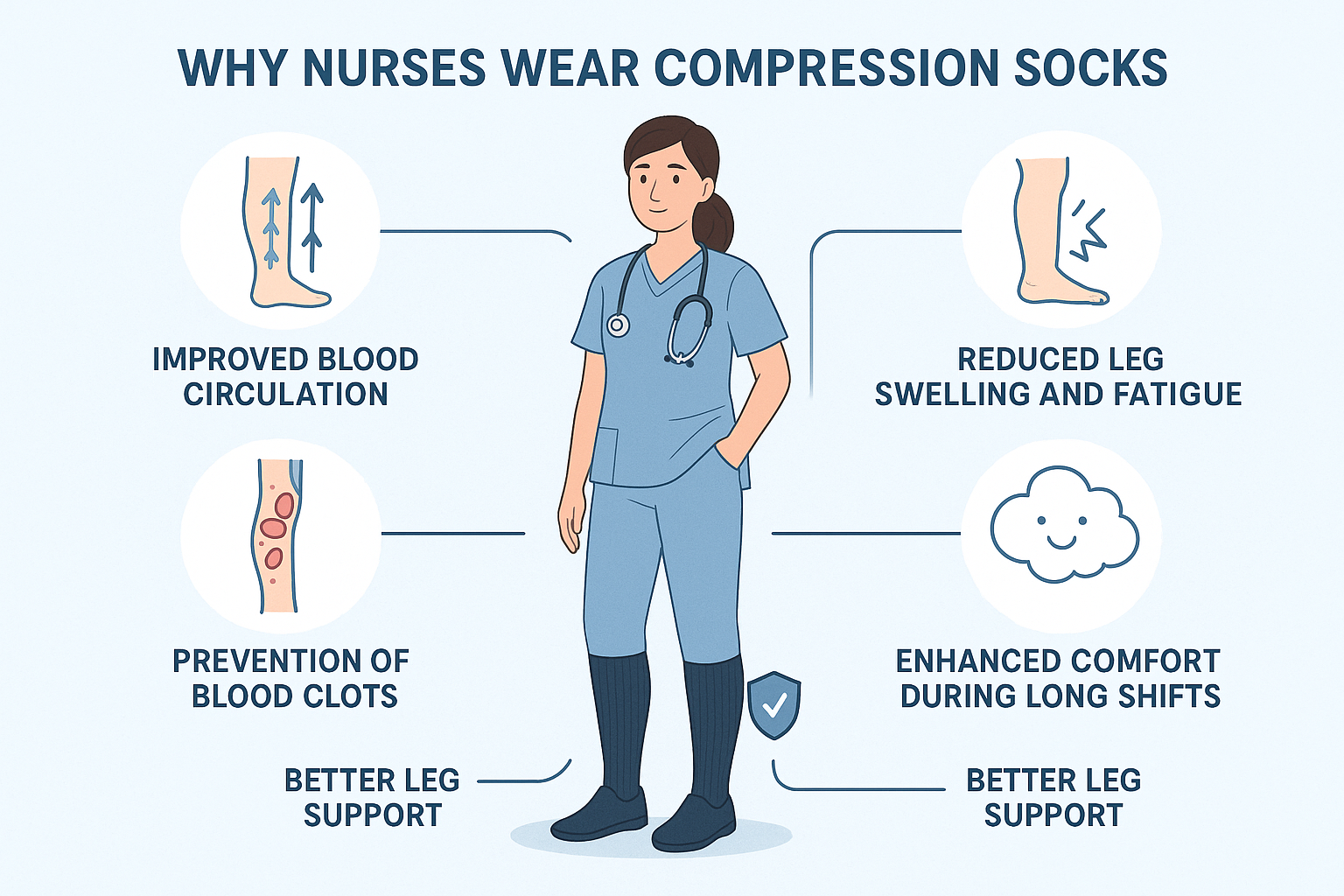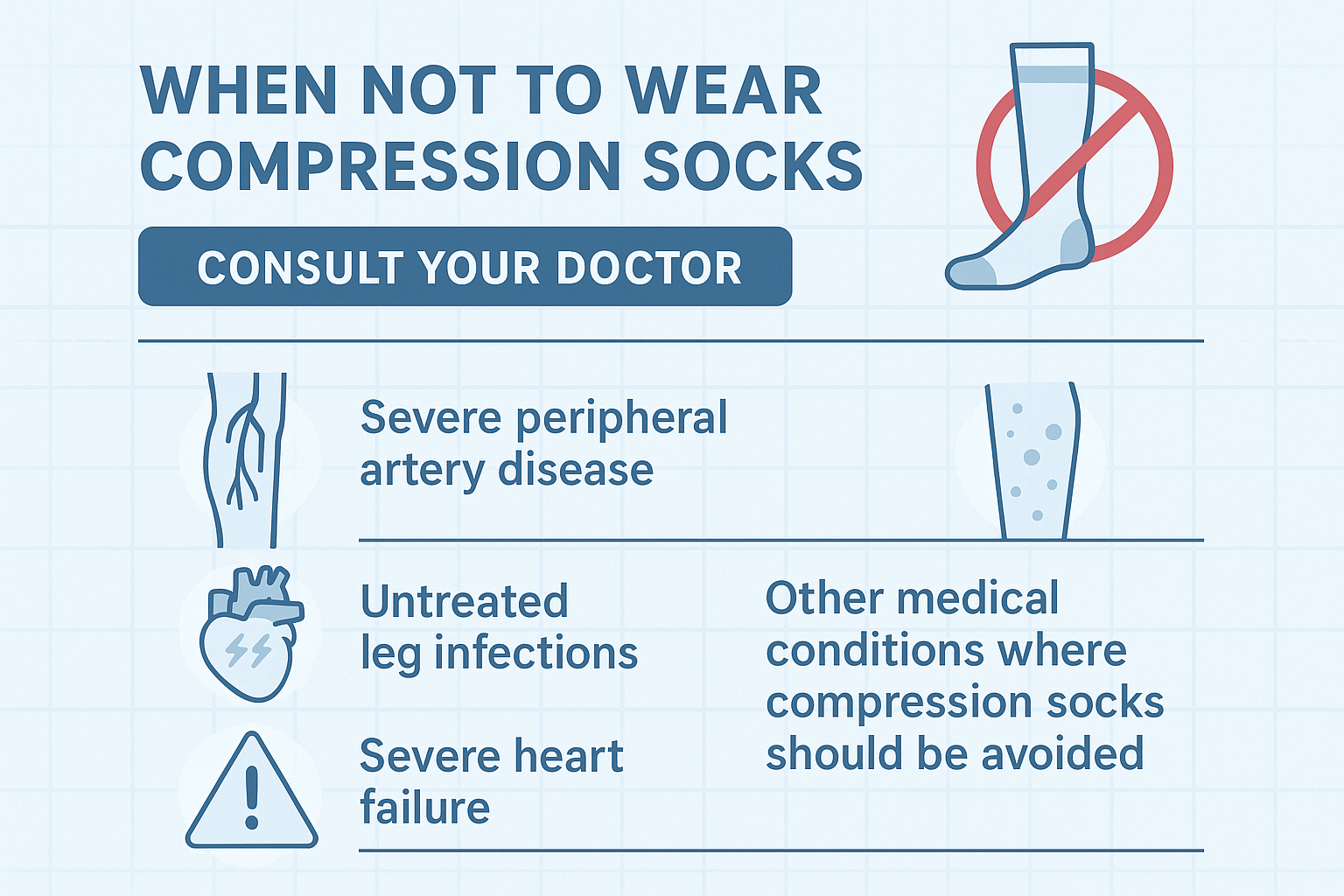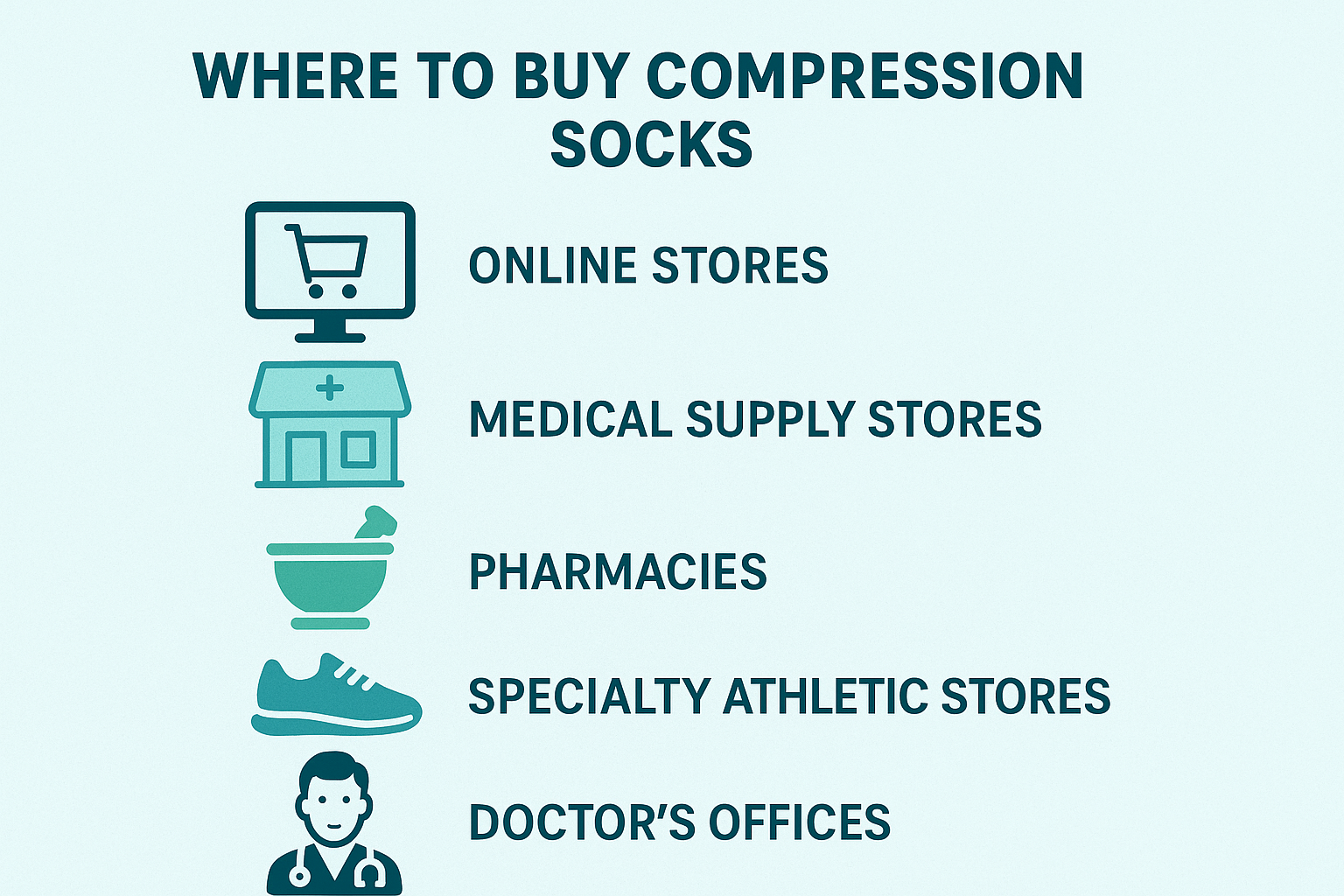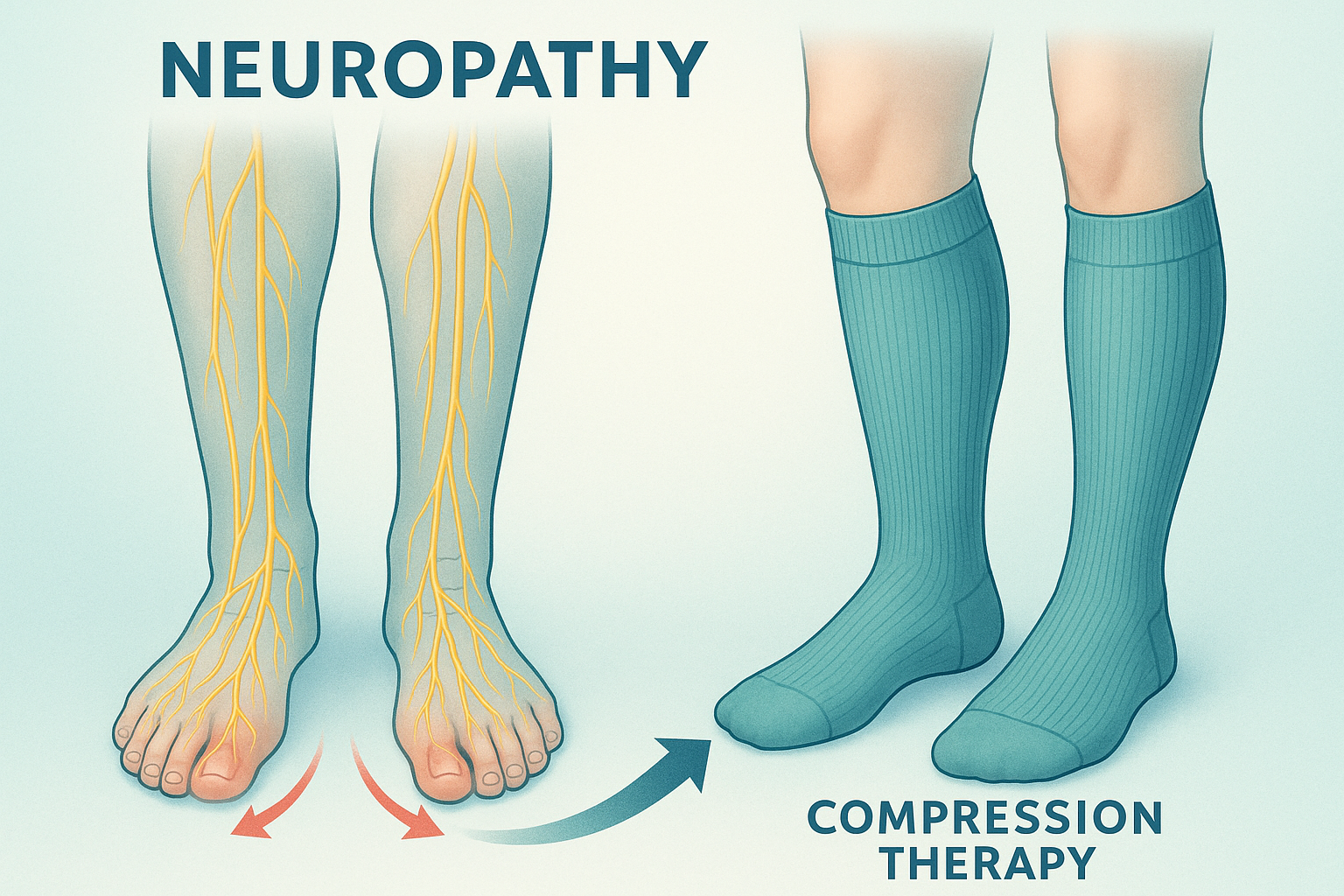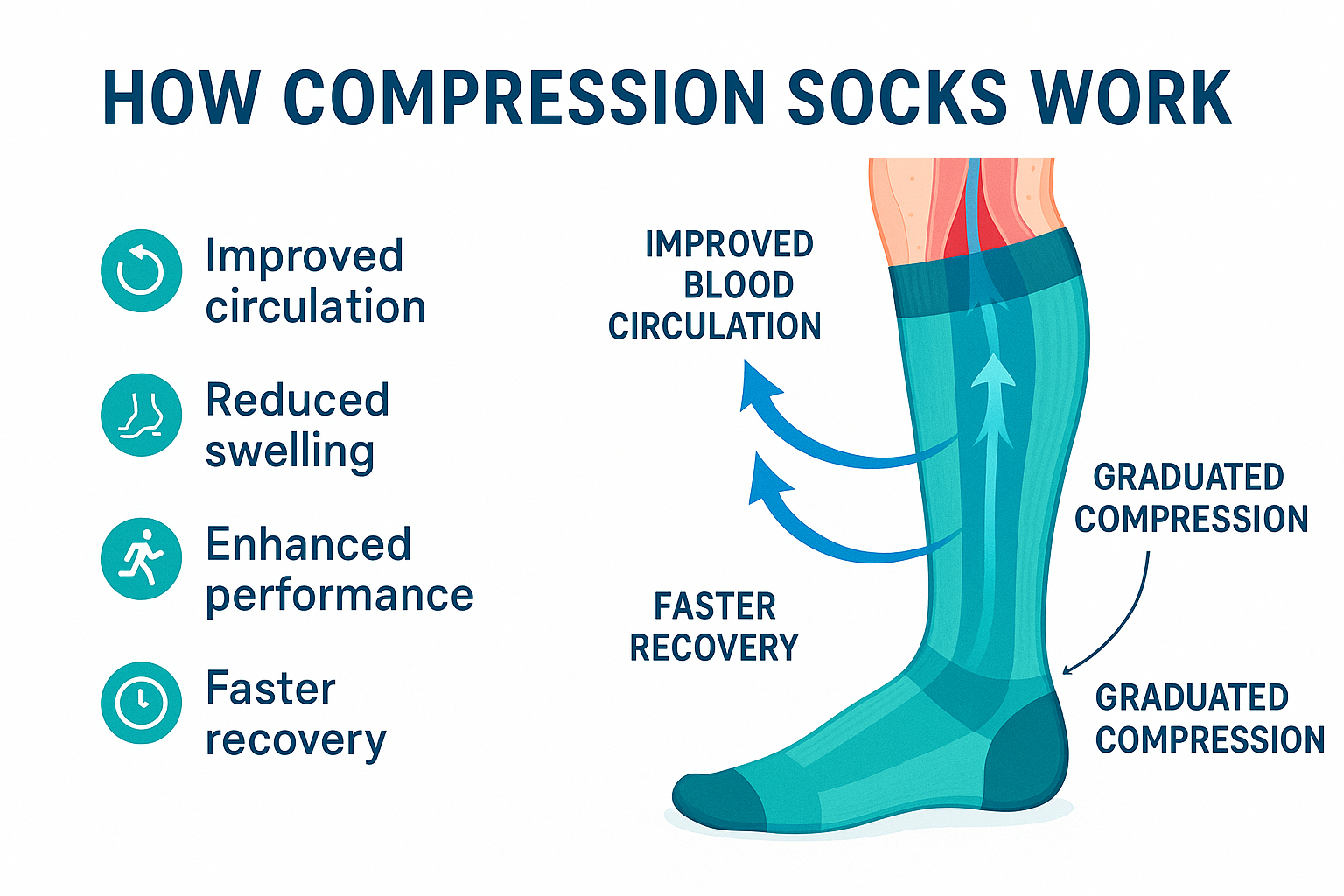
Do Compression Socks Work? The Science Behind Their Benefits
Compression socks have become a go-to solution for athletes, nurses, travelers, and anyone looking to improve leg comfort and circulation. But the question remains: do compression socks really work?
The short answer: yes — when worn correctly and chosen at the right compression level, compression socks are clinically proven to improve blood flow, reduce swelling, and enhance recovery. In this guide, we’ll explore how they work, the science behind them, and how to use them for the best results.
What Are Compression Socks?
Compression socks are specialized garments designed to apply gentle, graduated pressure to your legs and ankles. This pressure is strongest at the ankle and gradually decreases toward the knee, helping push blood upward toward your heart.
They’re made from stretchable materials like nylon and spandex, providing snug support without cutting off circulation. The goal is simple — improve venous return, reduce swelling, and prevent blood from pooling in your lower legs.
How Do Compression Socks Work?
To understand how compression socks work, it helps to look at what happens inside your veins. Blood must travel upward against gravity to return to the heart. When you sit or stand for long periods, blood flow slows and can pool in your legs, causing swelling and fatigue.
Compression socks apply external pressure that:
- Improves blood circulation: Encourages veins to move blood more efficiently back to the heart.
- Prevents swelling (edema): Reduces fluid buildup in the feet and ankles.
- Supports veins: Helps prevent varicose and spider veins from worsening.
- Enhances oxygen delivery: Keeps muscles supplied with fresh oxygen and nutrients during activity.
This is why compression socks are used in medicine, athletics, and even long-distance travel — because they’re backed by science, not just comfort marketing.
Scientific Evidence: Do Compression Socks Actually Work?
Multiple studies confirm that compression socks are effective for both medical and performance-related use cases.
- Clinical research shows compression stockings can reduce leg swelling and fatigue in people who sit or stand for long hours.
- Medical studies demonstrate that compression can prevent deep vein thrombosis (DVT) during long flights or hospital recovery.
- Sports research finds that compression garments may improve muscle recovery and reduce soreness after intense workouts.
In short, yes — compression socks work by combining medical-grade pressure science with comfort-driven materials. The key is using the right pair for your specific needs.
When Do Compression Socks Work Best?
Compression socks can be beneficial in several everyday situations. Here are the most common times they’re most effective:
1. During Long Hours of Sitting or Standing
Office workers, cashiers, teachers, and healthcare professionals spend long hours on their feet. Compression socks help keep blood moving, preventing swelling and leg fatigue.
2. During Travel
Wearing compression socks during long flights or road trips reduces your risk of deep vein thrombosis (DVT) and swelling caused by inactivity and pressure changes.
3. During Exercise
Athletes use compression socks to enhance endurance and stability. The improved circulation may delay muscle fatigue and help deliver more oxygen to working muscles.
4. After Exercise (Recovery)
Wearing compression socks post-workout can speed recovery by promoting the removal of lactic acid and reducing inflammation.
5. During Pregnancy
Expectant mothers often wear mild compression socks to relieve swollen feet and improve blood flow during pregnancy. It’s a safe, natural way to ease discomfort.
6. During Medical Recovery
Doctors often recommend compression socks after surgery to prevent clotting and promote faster healing. They’re also used to manage varicose veins and lymphedema.
Who Should Wear Compression Socks?
- People who stand or sit for long periods
- Travelers on long flights
- Pregnant women
- Athletes and runners
- Individuals with varicose veins or poor circulation
- People recovering from injury or surgery
If you experience leg swelling, fatigue, or discomfort by the end of the day, compression socks can make a noticeable difference.
What Types of Compression Socks Work Best?
Compression socks aren’t all the same. Their effectiveness depends on the compression level, fit, and quality of materials.
Compression Levels (mmHg)
- 8–15 mmHg: Mild compression for daily wear or travel.
- 15–20 mmHg: Moderate compression for mild swelling, standing, or sitting long hours.
- 20–30 mmHg: Firm compression for recovery or medical use (consult your doctor before use).
Fit and Sizing
Proper sizing ensures comfort and effectiveness. Socks should fit snugly without cutting off circulation. Measure your calf and ankle circumference for the best results.
Material and Quality
Choose breathable, moisture-wicking materials like nylon or spandex blends for all-day comfort. At Green Drop Compression, every pair is designed to balance compression accuracy with premium comfort and durability.
Common Myths About Compression Socks
Myth 1: Compression Socks Are Only for Older Adults
Not true — compression socks are used by everyone from marathon runners to office workers. They’re a wellness tool, not a medical device reserved for seniors.
Myth 2: Compression Socks Cut Off Circulation
When sized properly, they actually improve circulation, not restrict it. Discomfort usually means you’re wearing the wrong size or compression level.
Myth 3: They Don’t Make a Noticeable Difference
Wear them for one full workday or flight and you’ll feel the difference — less swelling, less fatigue, and more energy in your legs.
How to Know If Compression Socks Are Working
You’ll know your compression socks are working when you notice:
- Less swelling in ankles or calves
- Reduced leg fatigue and heaviness
- Improved comfort after sitting or standing
- Faster post-workout recovery
- Fewer visible varicose veins
If your socks cause pain, redness, or numbness, they’re likely too tight or the wrong fit. A properly fitted pair should feel supportive and comfortable all day long.
When Compression Socks May Not Work
Compression socks may not be suitable for everyone. Avoid or consult a doctor before use if you have:
- Severe peripheral artery disease (PAD)
- Open wounds or infections on your legs
- Congestive heart failure (unless prescribed)
- Skin conditions aggravated by pressure
FAQs: Do Compression Socks Really Work?
Do compression socks improve circulation?
Yes — that’s their primary purpose. They apply graduated pressure to push blood upward, preventing pooling and promoting healthy blood flow.
Can compression socks reduce swelling?
Absolutely. They help prevent and relieve fluid buildup (edema) in the lower legs, especially after long flights or workdays.
Do compression socks help with recovery after exercise?
Yes. Compression socks promote faster recovery by improving oxygen delivery and flushing out lactic acid from the muscles.
How long does it take to see results?
Many users notice benefits within hours — lighter legs, reduced swelling, and improved comfort. Consistent daily use brings the best results.
Can I wear compression socks every day?
Yes, they’re safe for daily wear. Just make sure to remove them at night unless your doctor recommends otherwise.
Related Guides
Final Thoughts: Yes, Compression Socks Work — When You Choose the Right Pair
Compression socks have been medically and scientifically proven to improve circulation, reduce swelling, and boost recovery. The key is choosing high-quality, properly fitted socks and wearing them consistently.
At Green Drop Compression, we design compression socks that combine science, comfort, and style — so you can feel better, perform better, and live more actively every day.
Explore our full collection of compression socks and experience the difference for yourself.



